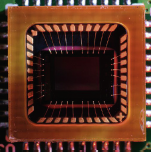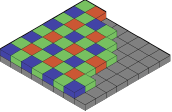|
|
The scanner was developed about 50 years ago in Kiel, starting with the fax machine invented by Dr Rudolf Hell. It was designed to transmit information for the newspaper industry and was capable of transmitting documents in the form of an image rasterized into lines and pixels.
This unit was equipped with a sensing drum, and for the first time was also capable of reading color originals optoelectronically, converting the color values into electrical current. A photomultiplier converted incoming light into electric current using "light sensors", amplified it, and was thus capable of achieving a high density range.
This costly, complicated device later developed into the "flatbed scanner", which used a different, more cost-effective technology, the CCD element, to form a "scan line" that used a series of color-sensitive photodiodes to read an image and reproduce it in color.
Further scanner development took place due to the different tasks needed: variations of the flatbed scanner for different formats, camera scanners with freely moving lenses for three-dimensional objects, and film scanners for negatives and slides.
Later, the CCD line was replaced by the CCD chip (the Bayer chip), which is capable of reading a color document in fractions of a second by reading out the RGB-Bayer matrix.
While the first scanners could resolve 8 bits (28), then 10 bits (210), then 12 bits (212) for 4094 gray scales, today's scanners can differentiate up to 16 bits (216), or 65,000 gray scales. However, the human eye is not capable of perceiving all of them.



|



|
|


